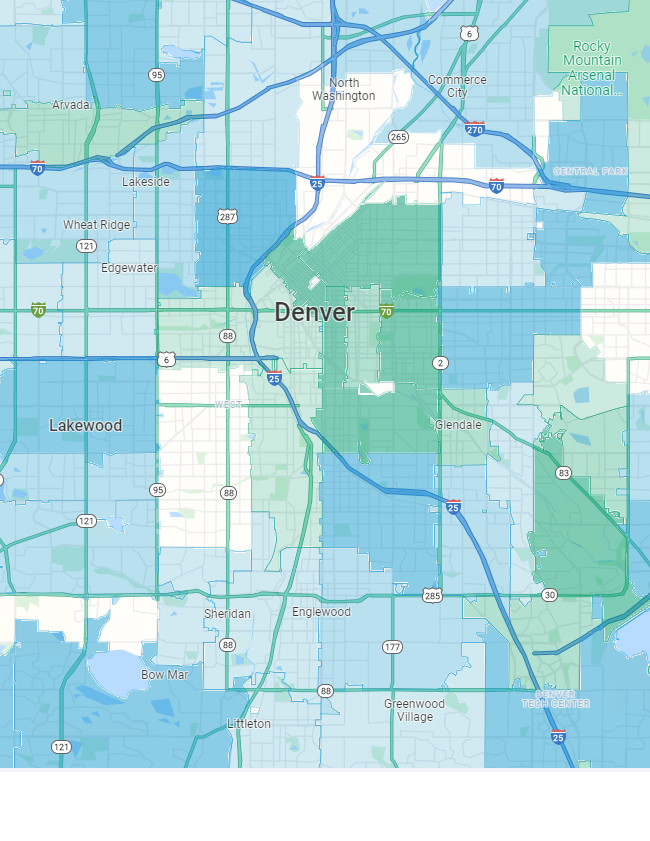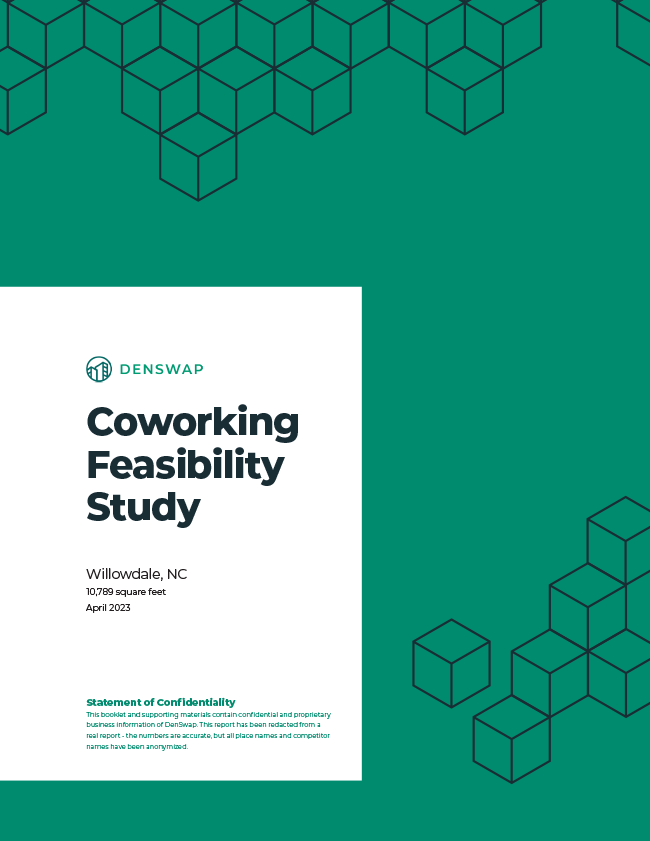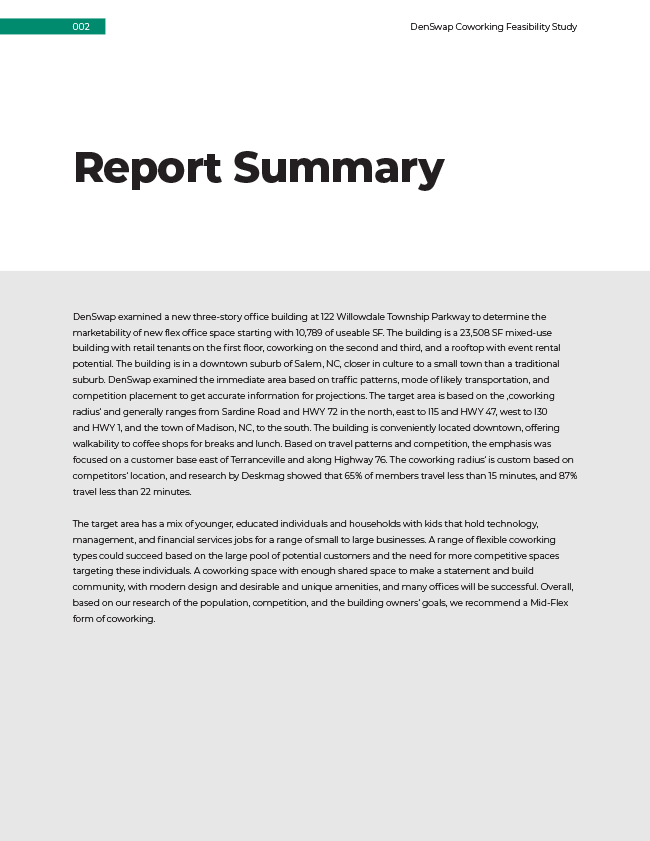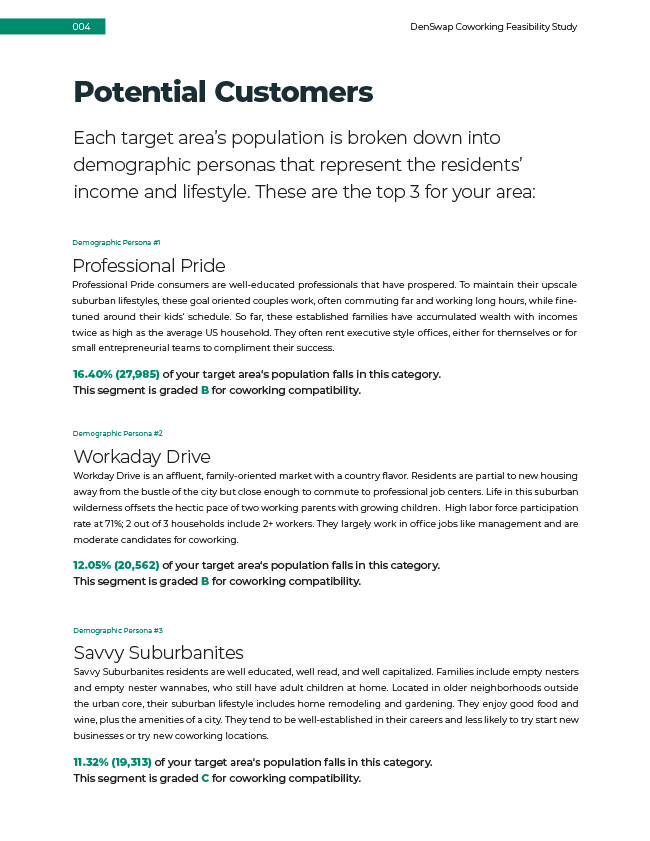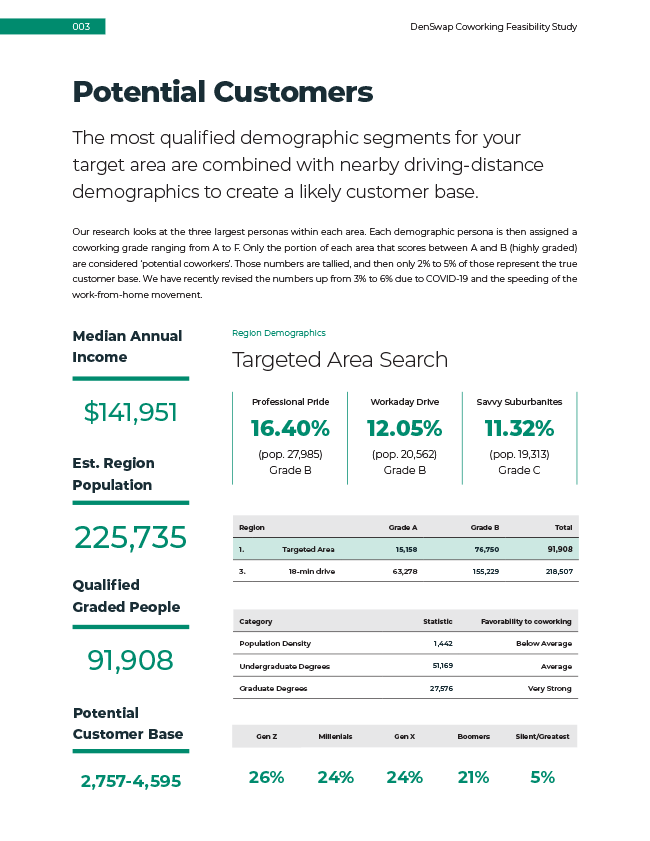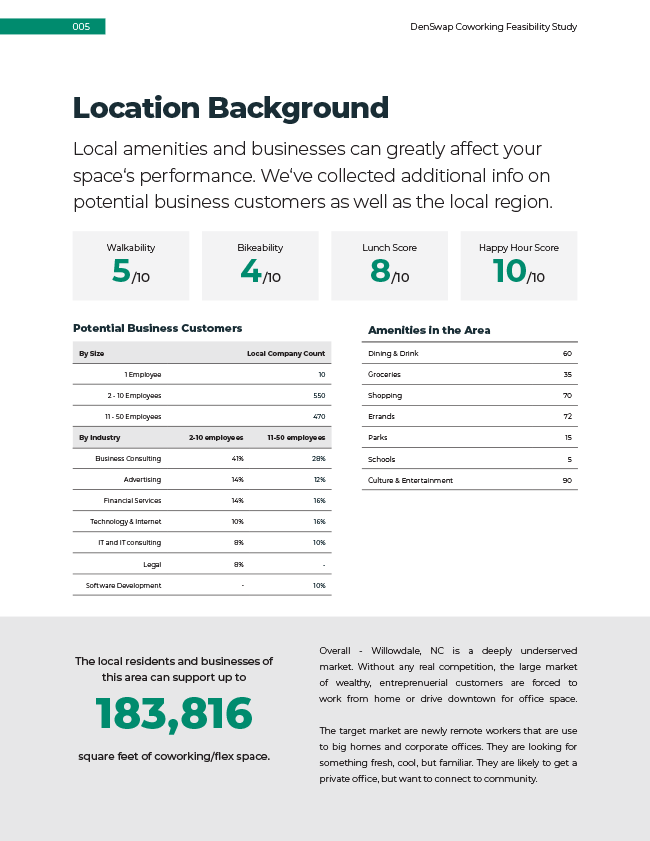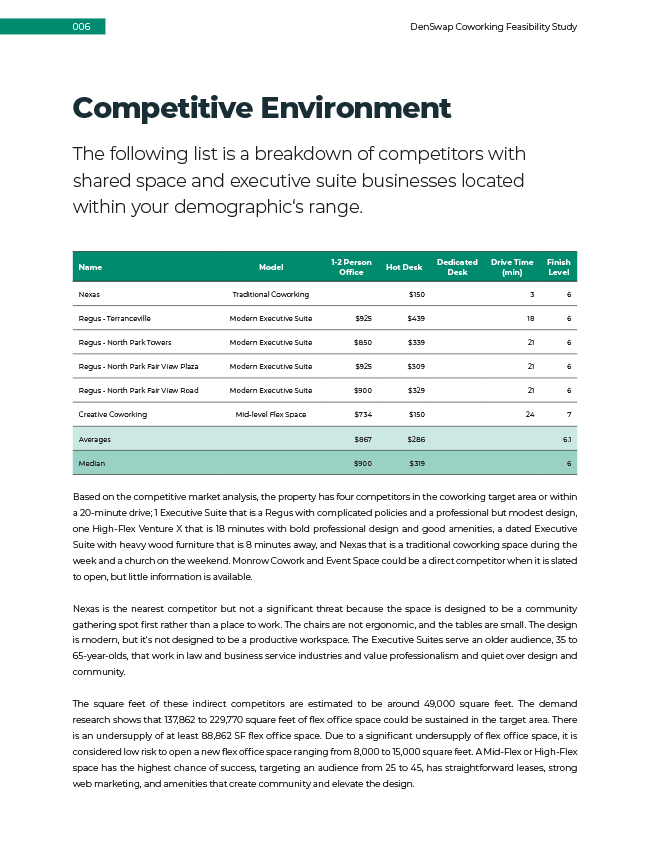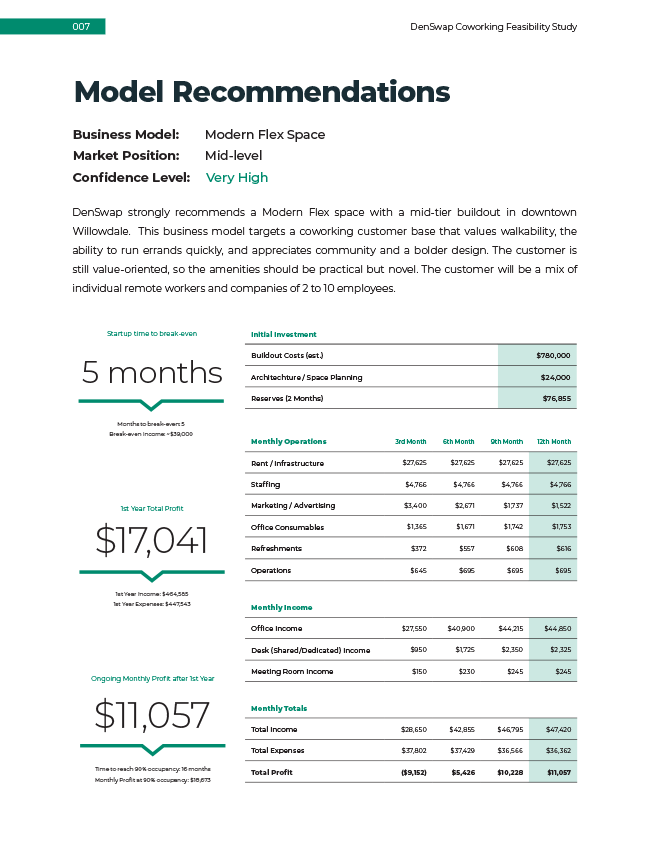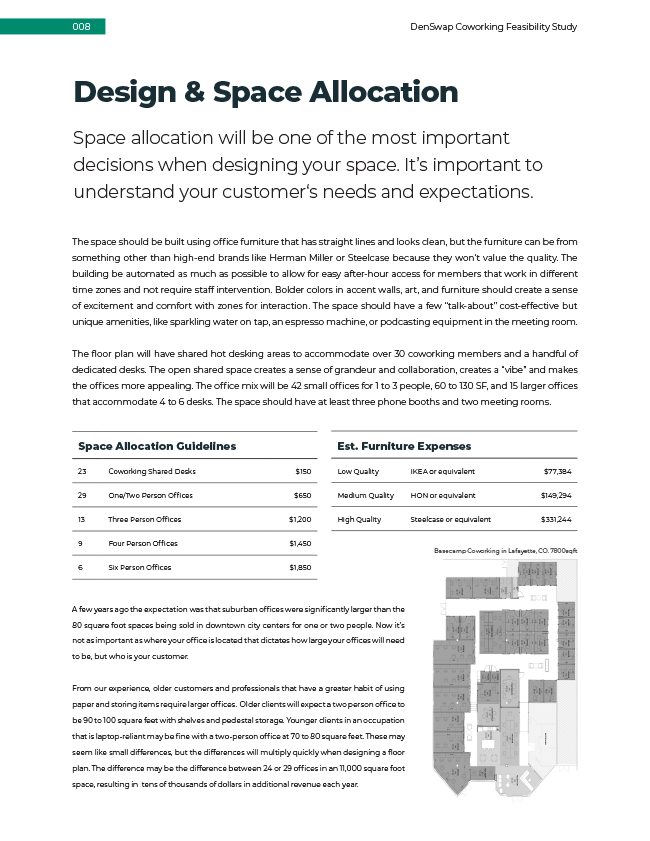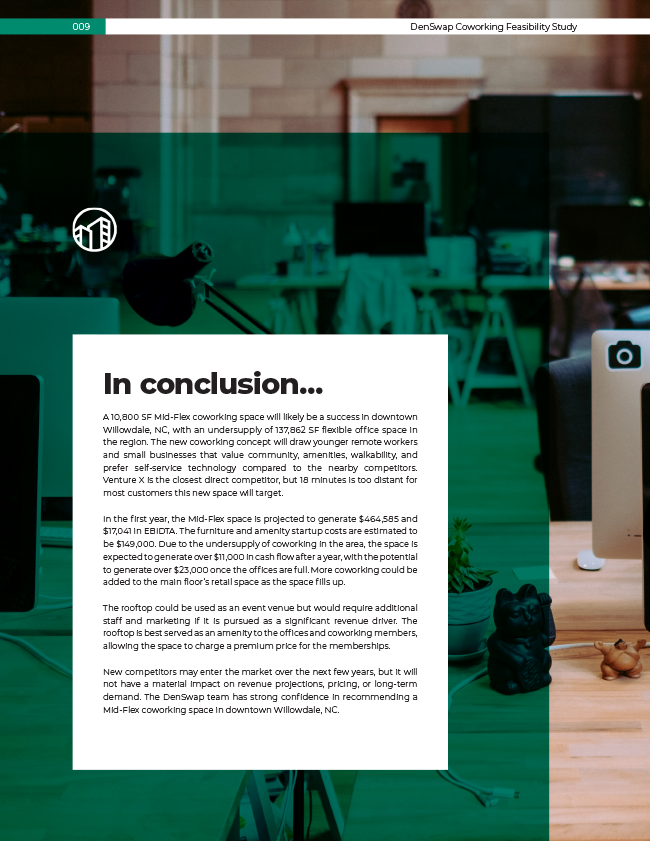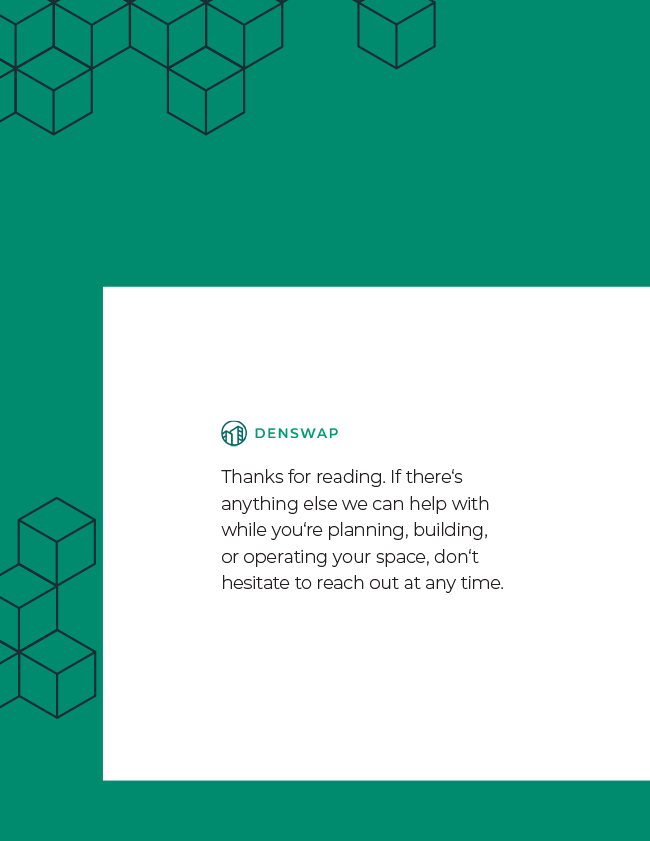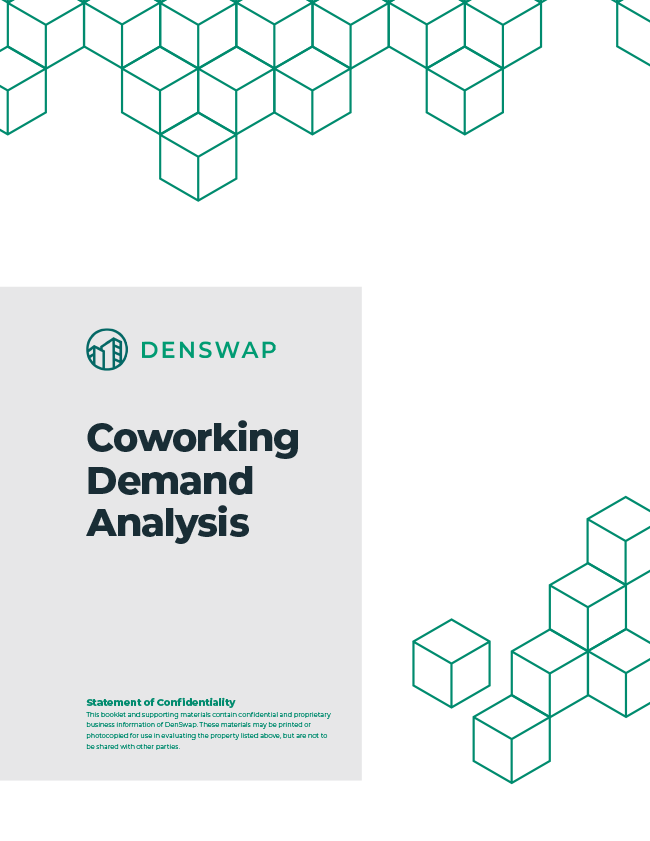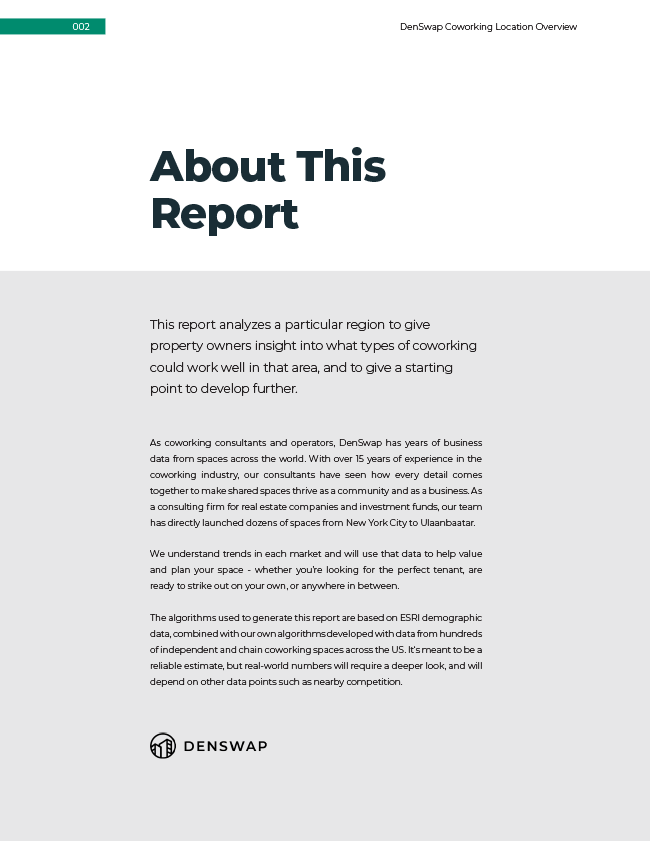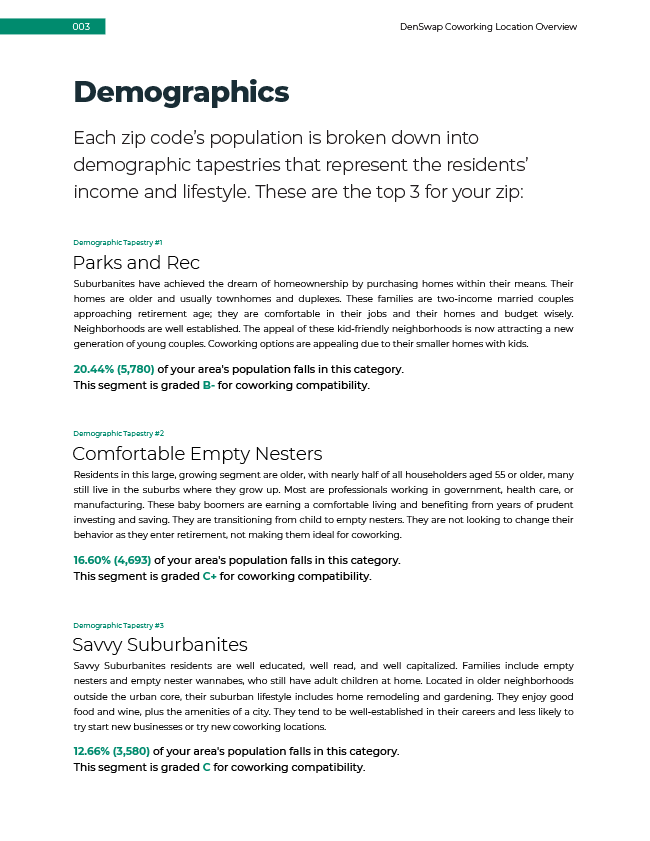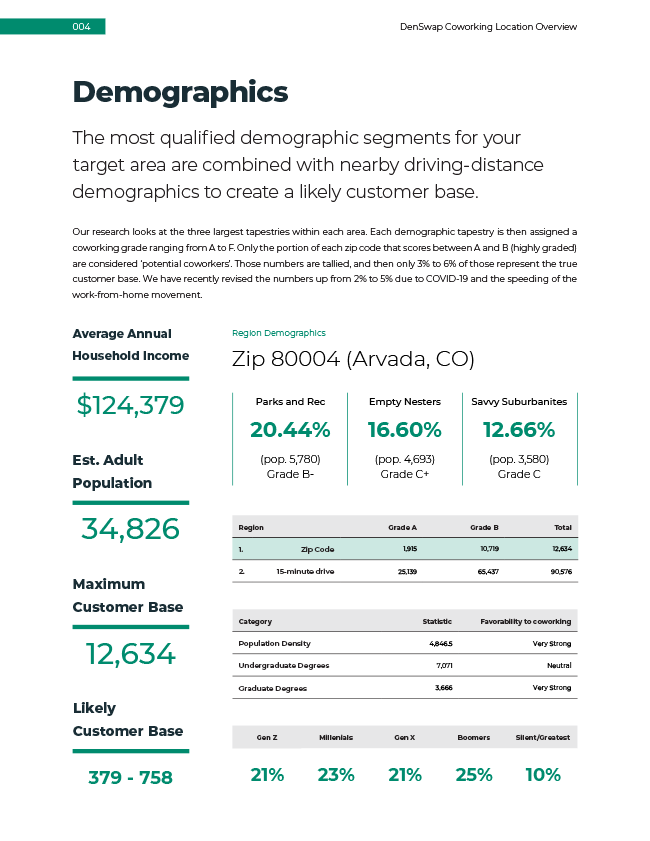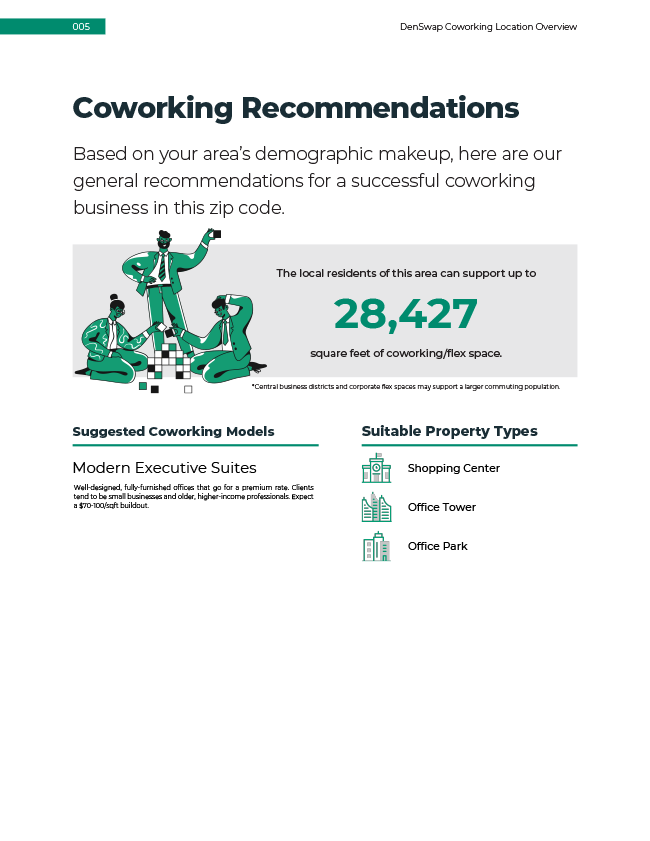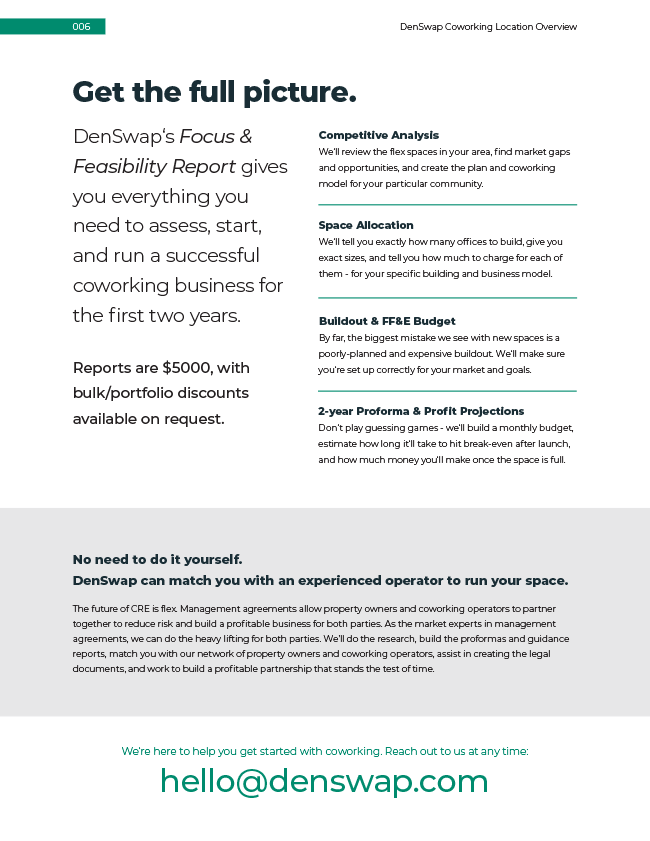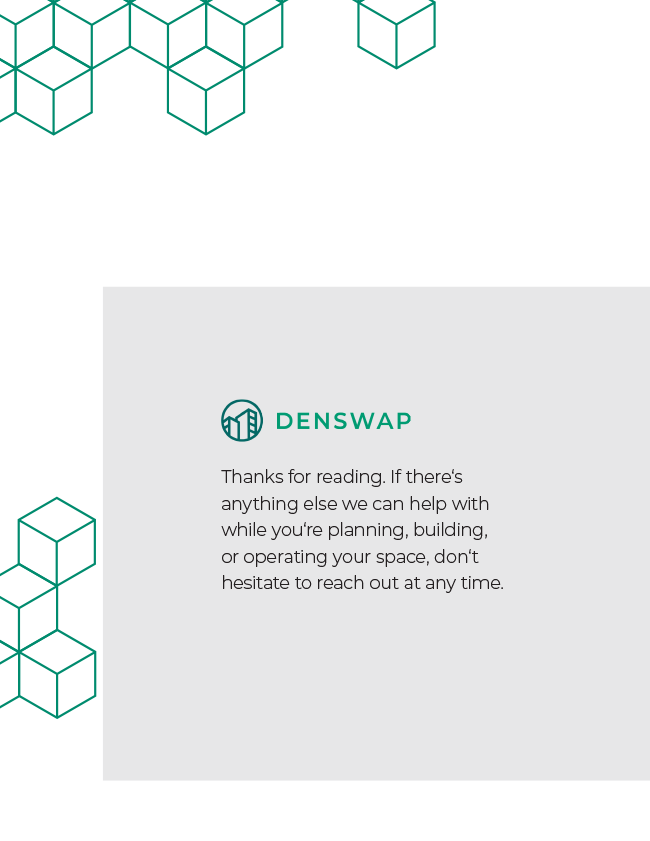Too often coworking onlookers see coworking as a ‘build it and they will come’ property play similar to self-storage or apartments. They tour a few places, create a check-list of things that they need, and walk away thinking they have the playbook to success. Property developers entering the game talk to architects and furniture companies and start laying out the blueprints. They rarely discuss with experienced coworking operators in fear of being rejected, asking dumb questions, or simple hubris. After all, coworking is just offices and a ‘For Rent’ sign…. right?
The problem is, mistakes can be costly and most inexperienced people diving into coworking for the first time won’t realize the mistake until they are hundreds of thousands in debt or sitting with an empty space, void of collaborative energy, and not meeting their financial goals. DenSwap has worked with enough property owners that are looking to start a space or looking to transfer one to an existing operator through a management contract to notice some common, expensive, and easily avoidable mistakes.
Mistake #1: Inefficient Furniture Sizes
People that haven’t worked out of a coworking space often look at their huge desk at home or in their large private office and just mimic it. They order desks that are 36 inches deep and 60 or 72 inches wide. These desks might be nice, but people aren’t willing to pay up for it and they make a room seem small. A large desk can often make a 140 square foot 4-person office feel like a 2-person office. This means that the space will only be able to charge $800 for the office vs. an estimated $1,250 for the office since most private offices are advertised and compared by how many people they seat and not square feet. This one mistake makes the offices generate $5,400 less revenue per year. Ouch!

Large desks also make a room less adaptable to a rotating group of members throughout a year. Most coworking desks should be 24 inches by 48 inches. In certain markets, we might recommend a 30 inch by 48 inch desk. The desk storage should never be attached to the desktop. It should be a proper storage pedestal with wheels that can easily moved or pulled out with a cushion on top for some temporary seat. You, your staff, and your members will be moving around a lot of furniture and commercial furniture is very heavy. Desk storage is especially heavy and it’s a heck of a lot easier to wheel it around versus having it attached as another obstacle to maneuver in and out of narrow door ways.
Plus, a lot of members will not want storage because they are paperless and they would rather have more legroom. If the desk storage is attached to the desktop then the entire desk is useless. You’ll have to move the 200 pound desk into storage and move in a new desk or potentially loose a sale. In short, keep the desk and storage separate.
Desks are expensive ranging from $550 for a desk with pedestal storage to $1300 for most commercial grade furniture. If you have a 7,000 square foot space then the workspace furniture with a chair will cost around $95,000 to $130,000. You don’t want to mess the furniture order up.
The combination of having to replace furniture and the loss revenue can be a painful lesson for first time coworking entrepreneurs. We’ve seen coworking spaces fail because of this simple mistake.
Mistake #2: Inefficient Office Sizes
Private offices are expensive to build out and difficult to fix after the space is open. Too often people guess on how many single person offices, four person offices, and conference rooms their should be based on gut-instinct. They try to recreate a space they have already seen or something that makes their pro-forma work. The right approach needs to be data-driven based on market research that helps illuminate potential demand for different size offices and understand how larger teams might use the space.
Private offices in coworking are a literal game of inches. If an office is 6 feet by 11 feet then it’s a two-person office renting for $800, but if it’s a 9 feet by 11 feet then it’s a three-person office renting for $1,100 or $1,200. However, it’s not about just square feet but the dimensions and how desks can be laid out.
No matter what the office size allocation is it’s not going to be perfect, but too often spaces have too many offices of the wrong size. This error by not relying on a data-driven approach with market research causes them to discounted and the space misses out on tens of thousands of dollars each year.
Avoiding Mistakes
Coworking is a hard hospitality business. The details of furniture size and office sizes are just two of the big decisions that first-time coworking entrepreneurs need to make. DenSwap works with property owners to perform feasibility studies and get matched up with the operator that has the right market positioning, branding, and process to create a successful community within their space through management contracts. If you own property and would like to learn more about transforming your vacant space into a coworking hub – schedule a call with our consulting team and let’s make something amazing.
Deprecated: Function the_category_ID is deprecated since version 0.71! Use get_the_category() instead. in /home/forge/v2web.propertyplanningtool.com/public/wp-includes/functions.php on line 5413


